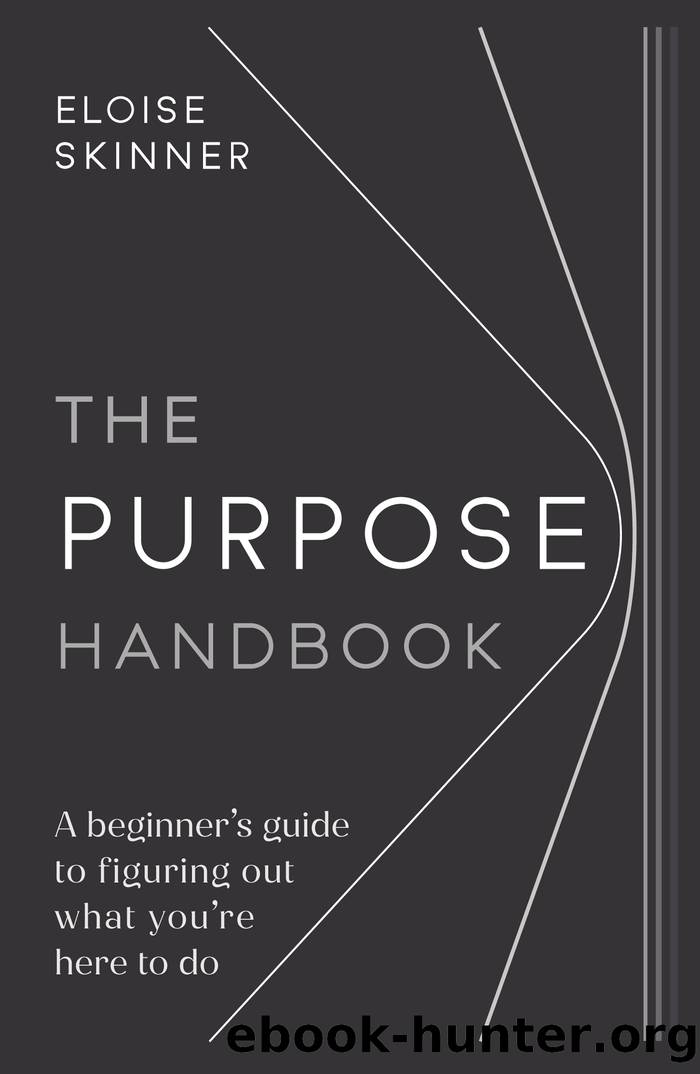The Purpose Handbook by Eloise Skinner

Author:Eloise Skinner
Language: eng
Format: epub
Publisher: Practical Inspiration Publishing
Published: 2021-11-14T16:00:00+00:00
Milestone mapping
Writing time: 15 minutes to map out
Preparation: your choice of calendar or diary
Recommended practice: one initial session to map out your milestones, and then designing a way to recognize your achievement when you reach them
This is a simple exercise that focuses on the power of celebration. We often forget, as we race towards bigger and bigger goals, that thereâs an immense psychological power in taking a moment to appreciate where we are right now. Weâve all heard about the power of the gratitude journal, and perhaps youâve experienced it too â the positive impact that can result from something as simple as noting the things youâre grateful for. âMilestone mappingâ is a similar psychological strategy: it encourages you to reach a goal, and then take a second to pause and appreciate it.
Itâs been reported that focusing on a positive experience takes a consistent amount of focus and intention, while focusing on negative experiences is much more instinctive.10 So, with this in mind, the milestone mapping exercise is based on the following steps:
1. Choose your milestone. Itâs up to you whether you want to make this is a big goal (a macro-style goal, if youâre using the goal-setting exercise above â see pp. 96â102) or a smaller, more achievable goal. It might even make sense to have smaller markers for your mini-milestones and a bigger marker for your main, macro goal.
2. Mark your milestone in your planner of choice â perhaps the calendar app on your phone, a paper diary or other tracking method. It might be, for example, the day of a final exam or the day of launch of a project. You can choose whether to mark the milestone on that particular day (which might work in the exam example) or the day/week after (which might be more appropriate for a new project, since the immediate aftermath of the launch might still involve a large amount of work).
3. Decide what your celebration or marker will look like. You can get a little creative here: it might be something low-intensity (like having a few days off to do your favourite things or catch up on Netflix), or something more significant (taking a vacation or having a gathering of friends and family). You can even craft something personalized to the particular milestone â for example, finishing an exam might mean you have a celebratory evening with your classmates, or getting a promotion might mean spending on something meaningful for yourself. Whatever it is, make sure itâs designed in some detail: this will not only serve as your milestone (i.e. your memory of achievement), but as an incentive to reach the milestone.
One important part of this practice is to create a record of the event in some way. So, for example, if itâs a post-exam gathering, take photos and keep them. If you decide to invest in a product or item, make it something that lasts. You want to keep associating the positive experience of the milestone with the achievement of the event itself.
Download
This site does not store any files on its server. We only index and link to content provided by other sites. Please contact the content providers to delete copyright contents if any and email us, we'll remove relevant links or contents immediately.
Zero to IPO: Over $1 Trillion of Actionable Advice from the World's Most Successful Entrepreneurs by Frederic Kerrest(4403)
Machine Learning at Scale with H2O by Gregory Keys | David Whiting(4259)
Never by Ken Follett(3883)
Harry Potter and the Goblet Of Fire by J.K. Rowling(3808)
Ogilvy on Advertising by David Ogilvy(3552)
Shadow of Night by Deborah Harkness(3326)
The Man Who Died Twice by Richard Osman(3040)
Book of Life by Deborah Harkness(2893)
Will by Will Smith(2872)
The Tipping Point by Malcolm Gladwell(2870)
0041152001443424520 .pdf by Unknown(2813)
My Brilliant Friend by Elena Ferrante(2792)
How Proust Can Change Your Life by Alain De Botton(2771)
Purple Hibiscus by Chimamanda Ngozi Adichie(2738)
How to Pay Zero Taxes, 2018 by Jeff A. Schnepper(2621)
Hooked: A Dark, Contemporary Romance (Never After Series) by Emily McIntire(2527)
Rationality by Steven Pinker(2327)
Borders by unknow(2280)
Can't Hurt Me: Master Your Mind and Defy the Odds - Clean Edition by David Goggins(2277)
